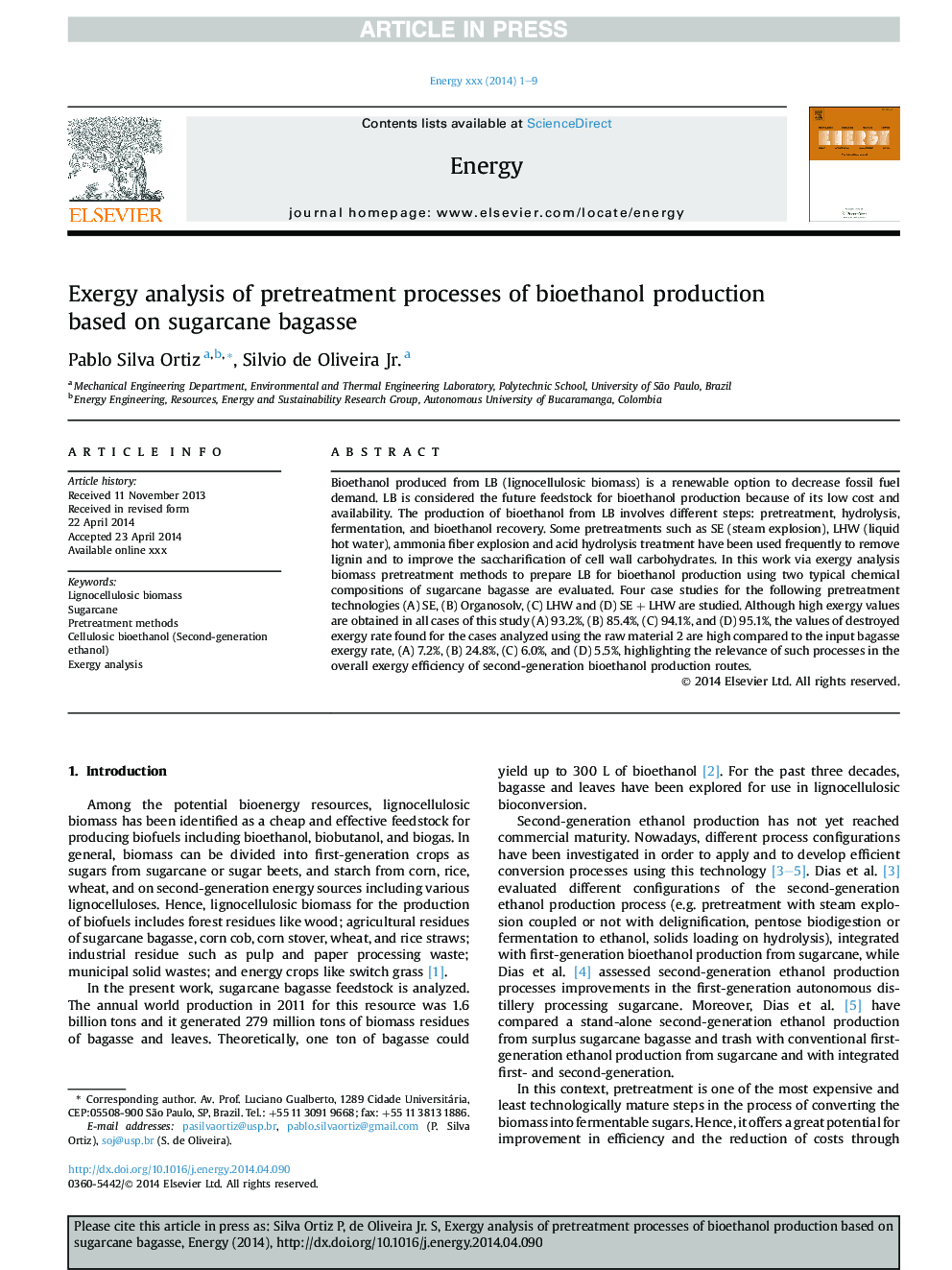| Article ID | Journal | Published Year | Pages | File Type |
|---|---|---|---|---|
| 8076535 | Energy | 2014 | 9 Pages |
Abstract
Bioethanol produced from LB (lignocellulosic biomass) is a renewable option to decrease fossil fuel demand. LB is considered the future feedstock for bioethanol production because of its low cost and availability. The production of bioethanol from LB involves different steps: pretreatment, hydrolysis, fermentation, and bioethanol recovery. Some pretreatments such as SE (steam explosion), LHW (liquid hot water), ammonia fiber explosion and acid hydrolysis treatment have been used frequently to remove lignin and to improve the saccharification of cell wall carbohydrates. In this work via exergy analysis biomass pretreatment methods to prepare LB for bioethanol production using two typical chemical compositions of sugarcane bagasse are evaluated. Four case studies for the following pretreatment technologies (A) SE, (B) Organosolv, (C) LHW and (D) SEÂ +Â LHW are studied. Although high exergy values are obtained in all cases of this study (A) 93.2%, (B) 85.4%, (C) 94.1%, and (D) 95.1%, the values of destroyed exergy rate found for the cases analyzed using the raw material 2 are high compared to the input bagasse exergy rate, (A) 7.2%, (B) 24.8%, (C) 6.0%, and (D) 5.5%, highlighting the relevance of such processes in the overall exergy efficiency of second-generation bioethanol production routes.
Related Topics
Physical Sciences and Engineering
Energy
Energy (General)
Authors
Pablo Silva Ortiz, Silvio Jr.,
